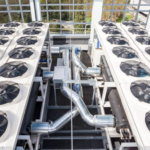With the rising electricity bills and the need for sustainable living, solar energy has become a favorite renewable source among Aussies. It helps to save on heavy electric bills and acts as an excellent investment for elevating the value of your residential or commercial property.
However, solar panel installation is not an easy task. You need proper research, understanding the type and quality of solar panels and figure out the best solar panel suppliers in Australia.
To help you with it, we have prepared this Solar Panel Installation Guide.
What to consider when installing solar panels?
Before installing solar panels, you need to consider these factors that affect solar production:
1. Consider energy requirements
Before installing solar panels, you should evaluate your daily energy requirements by reviewing the last 3-4 years of electric bills. It will help you to pick the accurate solar system that fulfils your energy needs.
2. Evaluate Property’s Efficiency
An ideal installation requires sunny weather conditions and sufficient roof space with no shading (trees, highrise buildings) factors. A visit from a professional can help you with site evaluation, who can consider factors like roof fitness, direction, and space and give appropriate suggestions.
3. Choose the appropriate Solar System
According to your energy needs, budget and space, opt for the appropriate type and size of the solar system. It will help in saving more on your electric bills.
4. Consider Financial incentives
The Australian government offers rebates and feed-in tariffs on solar, urging the public to opt for renewable energy. These incentives benefit estimating installation costs and selecting the size and type of solar system.
5. Choose an accredited Solar Inverter
A Solar Inverter converts the Direct Current (DC) generated by solar panels into Alternative Current (AC) that electric devices require for functioning. So it’s crucial to choose good quality solar inverters, to maximize the efficiency and durability of the solar system.
For example, if you buy a solaredge inverter, you will get assured of optimum performance with smart monitoring and at least 12 years of warranty.
Solar panel installation: The step-by-step process
1. Talk to your electricity retailer
Before switching to solar, talk to your electricity retailer to verify your electricity requirement, any dues, or whether you have a limitation due to any contracts.
2. Find CEC Approved Installer
When you install any solar system, opt for an installer with CEC accreditation. They only install high-quality accredited products and will guide you with the right type and size of solar panel.
3. Complete necessary paperwork
You need to sign some paperwork for installing solar panels on your property. Solar panel installer usually handles all the necessary paperwork. However, you should pay attention to the essential details like applications for government incentives, building permits, and a connection to the grid network.
4. Place equipment order and schedule the installation
Once the paperwork gets finalized, you can place the order for the selected solar system equipment. The installer helps with the selection before the paperwork, giving you a basic idea of the ordering and shipment process.
After the order placement, you can schedule the installation appointment. However, the installation takes time and depends on the approval of paperwork, equipment arrival, and the availability of the installer.
5. Solar panel installation
Finally, the day you have waited for – The Installation. It mainly involves the following steps:
- Racking the roof
For making your property solar-ready, installers perform racking on the roof. It is an essential step and involves the installation of racks or mounts on the required surface. It acts as a base for panel installation, providing support and the correct direction for solar energy absorption.
B. Install panels on mounts
Make sure to secure solar panels on mounts with tight and quality nuts or bolts so they won’t get damaged during an extreme wind or rainy weather conditions.
C. Conduct required electric wiring
To ensure a safe and secure solar system, connect electric wires properly. Most installers opt for MC 4 Universal Connectors in wiring as it fits all panels.
D. Install Solar Inverters and batteries
Once the electric wiring is complete, it’s time to install the required solar inverters and connect them with solar batteries (for off-grid) or the electricity grid. All this process will take one-three days, depending on the installation size.
6. Final approval and start using your solar system
After the successful solar panel system installation, your electricity provider will send someone to check everything and ensure it is free of any mistakes. Once everything is approved, another professional will come from the grid for final approval. After that, your property is ready to use solar power.
Conclusion
Solar panels are a long-term investment. So it’s essential to pay attention to all the factors that make an efficient system. We hope this guide will help you with solar panel installation on your property.















